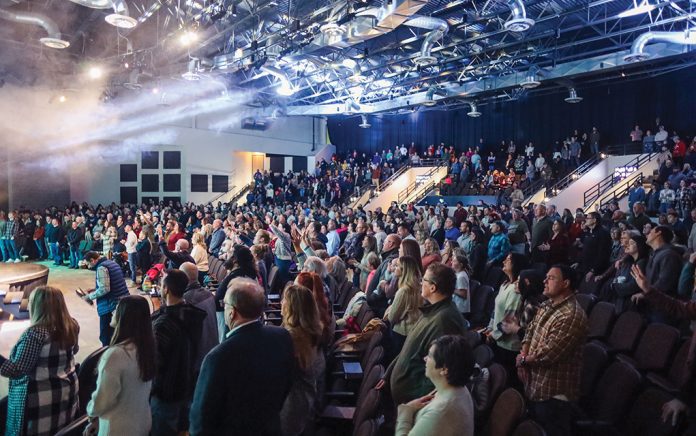As told to Heather Schnese
Tell us about Trinity Baptist Church.
We are on the west side of Oklahoma City. We’re definitely in a family community. We have two of the largest schools in Oklahoma right here. So, that’s a huge target for us—the next generation.
Two words have shaped your mission and how your church interacts with your community: together we. Can you share what that means?
My wife and I came here in 2019, and as I was getting ready for my first sermon series, the Lord gave me two words: together we. After that, we penned our mission statement out of Together We: Together we are a reaching, discipling, sending church impacting generations for Christ. We are on mission together. We’re going to do this together. This is not a pastor deal. This is not a staff deal. This is the whole church being the church in the community.
In what ways is your church together in the community?
We had a medical ministry called Faith Clinic. During COVID-19, we were really taking care of people by providing food for them through our Manna Pantry. But these ministries were growing, and we were beginning to run out of room.
We needed to update our worship center and our technology, and then we also needed to build a building out front that we would call the Together We Center. We wanted it to serve our county like nobody’s ever served it before. But we didn’t have the money, so we took it to the church. We wanted to pay cash and not go into debt, and God made it happen. Our church gave the money. It was insane to see what the Lord did.
Right in the middle of COVID-19, we launched the Together We Center. It’s the Faith Clinic, the Manna Pantry and a clothing boutique called Woven with new or gently used clothes for people in our community.
How has the Together We Center brought people into Trinity Baptist?
We went into COVID-19 with about 800 people. At the beginning of 2021, we were up to 1,200. Today we’re right at about 1,900.
We had someone just the other day come to our Manna Pantry. They were asking about our church and wondered whether they’d be welcome. We said, “Everybody’s welcome in our church.” So this person ended up coming, and their child gave their life to Christ. Now they’ve been baptized, gone through Growth Track and are connected in the church.
Our Woven Boutique did a whole deal for students who didn’t have any money for prom dresses. This drew teens in. And people who’ve come and gotten help at the Faith Clinic are coming to know Christ and coming to our church too.
What’s Trinity’s biggest challenge with retention right now?
I would say it’s fast growth, especially when we hit months where we add 500 people. We have a very lean staff, but suddenly we have to launch 20 new small groups. It can be overwhelming. But we have a great team—both staff members and the people in our church. If you showed up on a Sunday, you’d think, Wow, is everybody here on staff? They’re just so faithful and have really bought into the vision of Together We. And that’s really been how we handle such fast growth.
How are all these new people finding their way into the life of Trinity?
Our Growth Track is a four-week assimilation process. We wanted a lot of stability for those who were coming in. Growth Track happens every single Sunday. It’s the spot to go to if you want to join the church, get baptized, find a small group, find a place to serve or even if you just gave your life to Christ and wonder what’s next. Go to Growth Track.
You can start any week you want. We just want you to complete all four weeks. And we’re finding that people are finding community right away in Growth Track. You’ve got this church that’s growing so fast—so many people are brand new. But after sitting in a four-week class, you already know people in the lobby. You’ve already found community. That’s what makes it so valuable. Out of Growth Track, we launch them into small groups and places to serve. That’s how we keep up with the growth.

